Superfund Sites in Reuse in Utah
If you are having trouble viewing the map in your browser, click the 'View larger map' link below
Bountiful/Woods Cross 5th S. PCE Plume
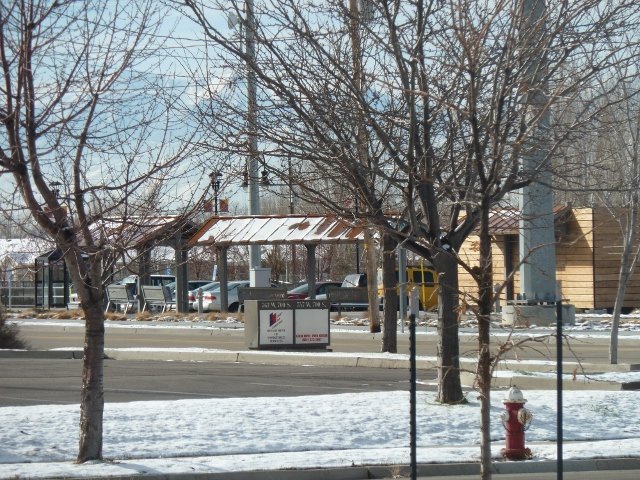
The 450-acre Bountiful/Woods Cross 5th S. PCE Plume Superfund site is in Bountiful, Utah. It includes two properties – the 50-acre Hatchco property and the 400-acre Bountiful Family Cleaners (BFC) property. From 1936 to 1996, several businesses were on site, including a petroleum facility, a dry cleaner and a trucking business. Over time, spills and leaks from operations and holding tanks contaminated soil and groundwater. The main contaminant at the BFC property was tetrachloroethylene (PCE). The main contaminant at the Hatchco property was trichloroethylene (TCE). PCE is a solvent used by dry cleaners in the cleaning process. TCE is used as a solvent to remove grease from metal parts. EPA added the site to the National Priorities List (NPL) in 2001. Cleanup included use of barriers, a water treatment system and long-term monitoring. Construction of the water treatment system finished in 2011. The site is in reuse. The Utah Transit Authority paved part of the Hatchco property to serve as a parking lot for the local commuter rail system. BFC remains active at the site and leases parts of its property to other commercial businesses. Areas affected by groundwater contamination remain in continued industrial, agricultural and residential use. Interstate 15 and rail lines also cross the site. In December 2021, the site was among those selected by EPA to receive cleanup funding under the Bipartisan Infrastructure Law (BIL). With this funding, EPA is already initiating work on backlogged remedial construction projects and accelerating cleanups at NPL sites.
Last updated December 2023
As of December 2024, the EPA had data on 4 on-site businesses. These businesses employed 40 people and generated an estimated $1,877,015 in annual sales revenue. For additional information click here.
For more information:
Davenport and Flagstaff Smelters
The Davenport and Flagstaff Smelters Superfund site is near Sandy, Utah, about 15 miles from Salt Lake City. It is in a residential and commercial area at the mouth of Little Cottonwood Canyon. The Davenport, McKay and Flagstaff smelters were active throughout the 1800s. In 1991, the discovery of ladle casts in Little Cottonwood Creek near the Flagstaff Smelter prompted a study of smelter sites in the Salt Lake Valley. Investigations by EPA in 1992 and by the Utah Department of Environmental Quality (UDEQ) in 1994 found high levels of arsenic and lead in soil at both smelter locations. EPA added the site to the National Priorities List (NPL) in 2003. In 2006, under an agreement with EPA and UDEQ and with the oversight of both agencies, Little Cottonwood Canyon Partners, LLC cleaned up an undeveloped agricultural part of the site for residential redevelopment. In 2011, UDEQ led the cleanup of a commercial area and undeveloped land designated as a watershed protection zone. All cleanups included the removal and proper disposal of contaminated soils as well as location-specific institutional controls to prevent certain land uses and to maintain the protectiveness of the remedy. Land uses on site include a residential area, a restaurant and the watershed protection zone. In 2018, EPA took the site off the NPL.
Last updated December 2023
As of December 2024, the EPA had data on one on-site business. This business employed 96 people and generated an estimated $5,080,000 in annual sales revenue. For additional information click here.
For more information:
Empire Canyon
The 36-acre Empire Canyon site is in the headwaters of Empire Canyon, south of Park City, Utah. Starting in the late 1800s, ore mining and processing facilities were on site. In 2000, a local watershed group found contaminated soils and surface water. In 2003, EPA and a potentially responsible party, United Park City Mines Company, agreed to an Administrative Order on Consent for a short-term removal action at the site. Cleanup included removing contaminated soil, covering areas with clean soil and rerouting surface water. In 2006, EPA and the U.S. Department of Justice negotiated a Prospective Lessee Agreement with DV Luxury Resort, LLC (DVLR). It provided liability relief for DVLR in exchange for DVLR's help with cleanup. In 2010, DVLR opened the Montage Deer Valley Resort & Spa. It features a spa, restaurants, event spaces and a condominium complex. It offers visitors ski-in and ski-out access during winter months. With help from EPA, DVLR brought sustainable features into all phases of the resort’s creation, from design to construction. DVLR used local building materials during construction and added a 2,800-acre conservation easement around the resort. The resort uses wind-generated power from Utah Blue Sky, has a comprehensive recycling system and provides local jobs. The resort is certified by the U.S. Green Building Council’s Leadership in Energy and Environmental Design (LEED) program.
Last updated December 2023
As of December 2024, the EPA had data on one on-site business. This business employed 500 people and generated an estimated $19,760,000 in annual sales revenue. For additional information click here.
For more information:
Eureka Mills

The 450-acre Eureka Mills Superfund site is about 80 miles from Salt Lake City, Utah. The site, a historic mining area, includes the city of Eureka and nearby areas. From 1870 to 1958, silver, lead and minerals were mined on site. Mining activities contaminated soil, surface water and groundwater. EPA added the site to the National Priorities List (NPL) in 2002. Cleanup included removing contamination from more than 700 residential and commercial properties in Eureka and waste capping. EPA’s cleanup planning enabled continued commercial and residential use of the site during cleanup while also ensuring a safe living and working environment. The site also includes parks and public services such as schools and government offices. In 2018, EPA took the site of the NPL.
Last updated December 2023
As of December 2024, the EPA had data on 30 on-site businesses. These businesses employed 99 people and generated an estimated $7,863,938 in annual sales revenue. For additional information click here.
For more information:
- Eureka Mills, Eureka, UT - Reuse Plan (PDF)
- Superfund Site Profile Page
- Eureka: A Superfund Success Story
Five Points PCE Plume
The Five Points PCE Plume Superfund site is in the Salt Lake Valley in Davis County, Utah. An area of contaminated groundwater begins in the town of Bountiful and extends for about a half-mile under Woods Cross City and North Salt Lake City. In 1988, Woods Cross City found tetrachloroethylene (PCE) contamination in a drinking water supply well. Investigations found the most likely source of the PCE was a dry-cleaning facility in Bountiful that used PCE in operations from 1964 to 2002. EPA added the site to the National Priorities List (NPL) in 2007. The Utah Department of Environmental Quality (UDEQ) leads ongoing investigation and cleanup efforts. EPA selected cleanup activities for the site in 2016. Current data show that contaminated groundwater has been withdrawn. UDEQ and EPA are evaluating if the cleanup method that includes groundwater pumping and treatment is a viable way to treat the retracted groundwater plume. The evaluation is ongoing. The site is in an urban area. Continued site uses include residential and commercial areas.
Last updated December 2023
As of December 2024, the EPA had data on one on-site business. This business employed 2 people and generated an estimated $93,000 in annual sales revenue. For additional information click here.
For more information:
Intermountain Waste Oil Refinery
The 2-acre Intermountain Waste Oil Refinery Superfund site is in Bountiful, Utah. Waste oil processing and chemical blending/shipping operations took place on site in the late 1950s through the early 1990s. These activities resulted in soil and groundwater contamination. Local residents complained of odors, which led to inspections by the Utah Department of Environmental Quality (UDEQ). EPA added the site to the National Priorities List (NPL) in 2000. Bountiful Irrigation purchased the site property and removed underground storage tanks, containers and debris. The company then built an office with a vapor mitigation system and a large garage on site. EPA led groundwater treatment efforts for several years and later installed a solar powered micro-blower on the last well with residual contamination. UDEQ monitored groundwater for many years. After cleanup, EPA took the site off the NPL in 2020.
Last updated December 2023
As of December 2024, the EPA had data on one on-site business. This business employed 9 people and generated an estimated $1,030,000 in annual sales revenue. For additional information click here.
For more information:
International Smelting and Refining
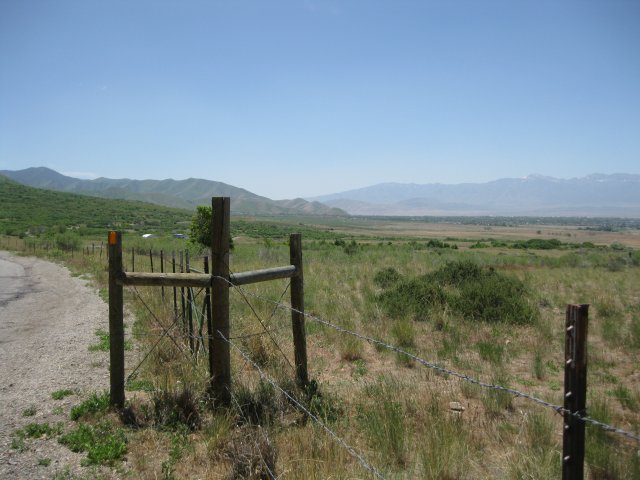
The 1,200-acre International Smelting and Refining Superfund site is northeast of Tooele, Utah. It is near the mouth of Pine Canyon, which drains into Pine Creek. From 1910 to 1972, the Atlantic Richfield Company (now known as ARCO and owned by BP) operated copper smelters that also recovered lead and zinc. Smelter operations produced about 650,000 tons of smelter waste and dust. Wind spread contaminants and dust from tailings piles over large areas of surface soil. EPA added the site to the National Priorities List (NPL) in 2000. Cleanup activities included removal or capping of contaminated soils from the former smelter area (now known as the Pine Canyon Conservation Area), the former Tooele Valley Railroad and residential properties closest to the former smelter area. After cleanup, EPA took the site off the NPL in 2011. The Utah Division of Wildlife Resources manages the Pine Canyon Conservation Area (PCCA). The PCCA offers recreation opportunities, including hiking, horseback riding and wildlife observation. Part of the Tooele Valley Railroad cleanup area included the city-owned Oquirrh Hills Golf Course, which remains open today. The former Toole Valley rail line is now a biking and walking trail. Cleanup also enabled the continued use of commercial and residential properties in the area.
Last updated December 2023
As of December 2024, the EPA had data on 3 on-site businesses. These businesses employed 14 people and generated an estimated $110,030 in annual sales revenue. For additional information click here.
For more information:
Jacobs Smelter
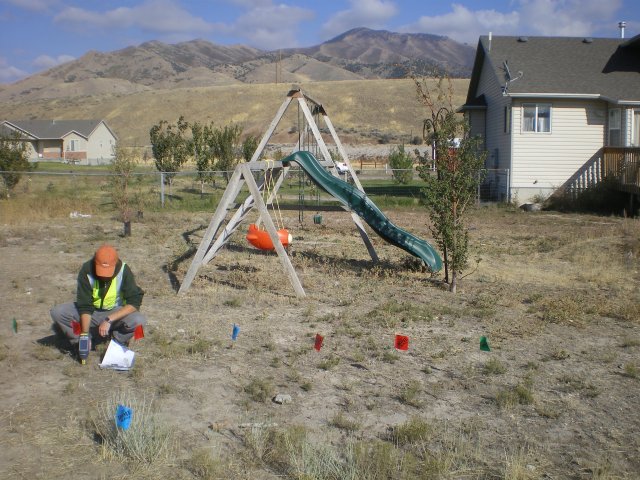
The Jacobs Smelter Superfund site includes the town of Stockton, Utah, and surrounding areas. The Stockton area was the center of a silver and base metal mining, milling and smelting district from the 1860s to 1970. The site is named after one of the smelters. Smelter operations contaminated soils with heavy metals. In 1999, EPA began cleaning up the former Jacobs Smelter property and contaminated residential properties. EPA added the site to the National Priorities List (NPL) in 2000. To manage the cleanup, EPA divided the site into six areas, or operable units (OUs). Cleanup activities have been completed at OU1 (Town of Stockton), OU3 (Union Pacific Railroad), OU4 (Rio Tinto Kennecott Copper) and at the Rawhide Ranchettes subdivision in OU2. Cleanup activities include excavation and off-site disposal of contaminated residential soils and capping and covering non-residential soils. The community of Stockton is in continued use. Other continued uses at the site include a rail line and residential, recreational and commercial areas. In December 2021, the site was among those selected by EPA to receive cleanup funding under the Bipartisan Infrastructure Law (BIL). With this funding, EPA is already initiating work on backlogged remedial construction projects and accelerating cleanups at NPL sites. The funding is currently being used to excavate approximately 80,000 tons of soil contaminated with lead and arsenic from both residential and recreational areas in OU2. The contaminated soil is being disposed of off-site, backfilled with clean fill, and revegetated.
Last updated December 2023
As of December 2024, the EPA had data on 9 on-site businesses. These businesses employed 50 people and generated an estimated $4,724,992 in annual sales revenue. For additional information click here.
For more information:
Kennecott (North Zone)

The Kennecott (North Zone) site is in an industrial area west of Salt Lake City, Utah. Starting in 1906, the Kennecott Utah Copper Company (Kennecott) processed metals, including copper and lead, in the area. Production wastes contaminated soil, surface water and groundwater. EPA proposed adding the site to the National Priorities List (NPL) in January 1994. In 1995, EPA agreed that Kennecott would continue the cleanup and EPA would postpone the site’s listing on the NPL. Kennecott’s cleanup actions have included and continue to include the removal and disposal of contaminated soils, sediments and solid mine waste pursuant to selected remedies and agreements with EPA. Kennecott is currently re-evaluating groundwater management underlying their North Zone operational facilities and potential impacts in an industrial wetland located downgradient of these facilities. Today, Kennecott continues the processing of ore in the North Zone, derived from their Bingham Canyon Mine located in the Kennecott South Zone. Interstate 80, state highways and rail lines cross the North Zone site, thus the area is used to support industrial land uses. The community of Magna was originally a part of the North Zone, but later received a “No Further Action” status at re-evaluation in 2014. Ongoing soil and solid mine waste management by Kennecott continues under site wide management plans approved by EPA. Kennecott’s operational facilities continue to comply with permits issued by the State of Utah to ensure operations do not continue to contribute to legacy mine waste issues. In 1997 Kennecott used a combination of land they owned and purchased land, located along the south shore of the Great Salt Lake, to create a shorebird and waterfowl reserve. Birding groups, schools and university research teams observe and study wildlife in the reserve, which has become a haven for birds and is an important education and scientific resource. In 2020 and 2021, EPA’s Superfund Redevelopment Program (SRP) provided support for the development of a site management framework for the site.
Last updated December 2023
As of December 2024, the EPA had data on 174 on-site businesses. These businesses employed 2,162 people and generated an estimated $179,242,264 in annual sales revenue. For additional information click here.
For more information:
Kennecott (South Zone)

The Kennecott (South Zone) site is southwest of Salt Lake City, Utah. It covers about 37 square miles. Mining activities at the site began in the 1860s. They continue today. Starting in 1906, the Kennecott Utah Copper Company (Kennecott) also used the area to process metals. Wastes from these activities contaminated soil, groundwater, surface water and sediment. This contamination led to the closure of drinking water wells in the area. EPA proposed adding the site to the National Priorities List (NPL) in 1994, leading EPA to designate the site a Superfund Alterative Process Site. In 1999, Kennecott removed more than 25 million tons of contamination. EPA withdrew the site’s NPL listing proposal in 2008, after signing a cleanup agreement with Kennecott. Cleanup included removal of contaminated soils, sediments, and sludges. Groundwater treatment is ongoing. Cleanup has also resulted in significant ecological benefits, including the creation of about 1,000 acres of wildlife habitat and open space. The Kennecott Land Company redeveloped 4,126 acres of the site into the Daybreak community. The development is a model of environmentally and socially responsible growth. All 13,600 homes and 9.1 million square feet of commercial building space meet EPA Energy Star efficiency guidelines. The community also features 1,250 acres of parks, a lake, trails, pedestrian-friendly town centers, shops, restaurants, grocery stores, churches, schools and mass transit. Kennecott’s owner, Rio Tinto, opened a corporate office in the Daybreak community. The U.S. Green Building Council’s Leadership in Energy and Environmental Design program certified the office. Ongoing development in the Daybreak community includes public transportation corridors, more homes and businesses, and light industry. Agricultural use in the site area is ongoing. In 2020 and 2021, EPA’s Superfund Redevelopment Program (SRP) provided support for the development of a site management framework for the site and the Kennecott North Zone Superfund site as well as a reuse guide for the area for prospective developers. The Kennecott South Zone includes operable units extending into the jurisdictions of the Cities of West Jordan, South Jordan, Riverton and Herriman, the Township of Copperton and portions of southwest Salt Lake County. The operable units in and underlying these communities were previously used for agricultural purposes (both dry and flood irrigated farming). Since the inception of these communities there has been steady growth towards Kennecott’s property boundary, with a mix of residential, commercial, and industrial redevelopment. In addition to the expansion of the Daybreak community by the Larry H Miller Group, further large acreage development is taking place in the Cities of Herriman and South Jordan. The Cities of West Jordan and Herriman, and Salt Lake County implement institutional controls during redevelopment projects to ensure impacted soils in the operable units in their jurisdictions are managed to protect public health.
Last updated December 2023
As of December 2024, the EPA had data on 197 on-site businesses. These businesses employed 5,621 people and generated an estimated $1,831,011,663 in annual sales revenue. For additional information click here.
For more information:
- Reuse and the Benefit to Community: Kennecott South Zone Superfund Site (PDF)
- Superfund Site Profile Page
Midvale Slag
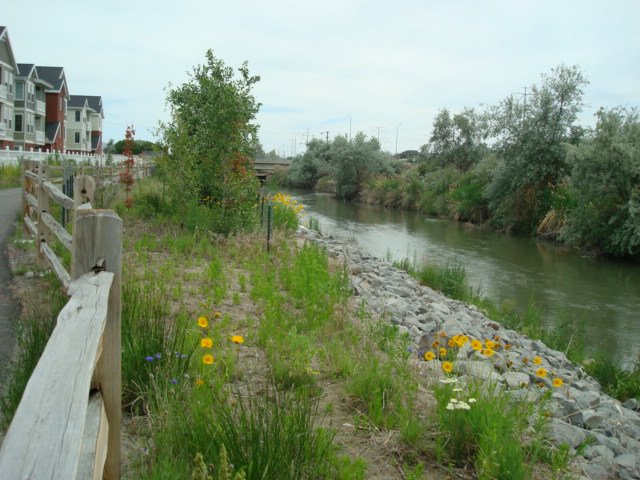
The 446-acre Midvale Slag Superfund site is in Midvale City, Utah. From 1871 to 1958, five smelters processed lead and copper ore at the site. These operations resulted in toxic levels of heavy metals in area soils and groundwater. EPA added the site to the National Priorities List (NPL) in 1991. EPA worked with state agencies, the city of Midvale (the City), local citizens and the property owner to link the cleanup with revitalization and redevelopment goals. Cleanup included soil excavation and removal, smelter waste and slag removal, groundwater monitoring and stabilization of the Jordan River banks. Midvale became the first community in EPA Region 8 selected for an EPA Superfund Redevelopment Program (SRP) pilot project. This led to the creation of the Bingham Junction Reuse Assessment and Master Plan in 2000. In 2008, EPA issued a Ready for Reuse Determination for the site stating that EPA had determined the site was ready for commercial and residential reuse. Today, the site is home to Bingham Junction, a thriving mixed-use development supporting thousands of jobs. Builders have completed extensive residential development at the site. New buildings on site include single-family homes, townhomes, condominiums, apartments and assisted living facilities. The site is also home to office buildings, a supermarket and other stores. FL Smidth, an international engineering company, has offices and labs on site. Its buildings achieved the U.S. Green Building Council’s Leadership in Energy and Environmental Design program’s Gold and Silver certifications. CHG Healthcare Services developed 283,000 square feet of space. Overstock.com developed a 231,000-square-foot office building, a 50,000-square-foot daycare and fitness studio, parking structure, and greenhouse to provide fresh fruits and vegetables for an on-site cafe. Sections of Bingham Junction’s Riverwalk Park provide community access to the Jordan River. A Utah Transit Authority light rail station opened on site in 2011. In 2015, EPA took the site off the NPL; all required cleanup activity is complete. EPA Region 8 also recognized the City with its Excellence in Site Reuse award for the locality’s efforts to support reuse and redevelopment at the site. The Midvale Redevelopment Agency reopened Bingham Junction Park in 2016; it offers a softball field, a basketball court, a play structure and a sledding hill. A wetlands mitigation area is also on site. Twenty-plus years of collaboration and dedication at the local, state and federal levels have transformed this once-contaminated land into a vibrant community resource.
Last updated December 2023
As of December 2024, the EPA had data on 64 on-site businesses. These businesses employed 3,181 people and generated an estimated $1,445,188,201 in annual sales revenue. For additional information click here.
For more information:
- Midvale Slag Ready for Reuse Determination (2008) (PDF)
- Cleanup and Mixed-Use Revitalization on the Wasatch Front: The Midvale Slag Superfund Site and Midvale City, Utah (PDF)
- Midvale Slag Reuse Case Study (PDF)
- Redevelopment of the Midvale Slag Superfund Site (PDF)
- Reuse and the Benefit to Community: Midvale Slag (PDF)
- EPA Region 8 Excellence in Site Reuse Award
- Superfund Site Profile Page
-
Video: From Midvale Slag to Bingham Junction
Monticello Radioactively Contaminated Properties
The Monticello Radioactively Contaminated Properties Superfund site, also known as the Monticello Vicinity Properties, consists of 424 private and commercial properties in and around Monticello, Utah. South of Monticello, a vanadium mill was active from 1942 to 1960. It produced uranium and vanadium for the U.S. nuclear weapons program. Milling activities and improper use of mine tailings caused uranium contamination throughout Monticello. EPA added the site to the National Priorities List (NPL) in 1986. The U.S. Department of Energy (DOE) led cleanup activities under an agreement with EPA and the state of Utah. The cleanup included properties within 8 miles of the mill. Property owners beyond that range could choose to have their land tested for cleanup as well. In 2000, DOE completed the cleanup of all affected properties, and EPA took the site off the NPL. DOE cleaned up properties within eight operable units for unrestricted use, allowing restoration of many areas to their original uses, such as residential and commercial uses, as well as 380 acres of open space. Other uses at the site includes neighborhoods, a central commercial district, municipal offices, a U.S. Department of Agriculture office, churches, parks, and schools. One operable unit contains residual contamination that does not allow for unrestricted use.
Last updated December 2023
As of December 2024, the EPA had data on 98 on-site businesses. These businesses employed 618 people and generated an estimated $44,388,852 in annual sales revenue. For additional information click here.
For more information:
Murray Smelter
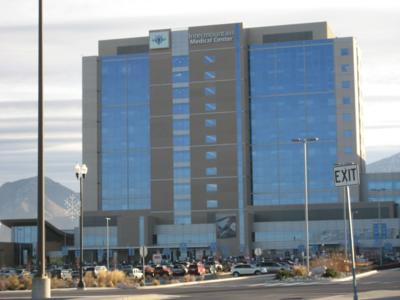
The 142-acre Murray Smelter site is in Murray City, Utah. This former mineral-processing area was once the largest lead smelter in the country. Testing found contaminated soil, surface water, groundwater and sediment. EPA Region 8 and Murray City entered into a unique agreement establishing a formal role for Murray City in planning the site’s cleanup and future use. EPA and Murray City coordinated cleanup and redevelopment planning. Murray City brought together site property owners and the potentially responsible party, ASARCO, to discuss the site’s redevelopment. The parties committed to building cleanup structures and following the Murray City General Land Use Plan. Based on outcomes from these discussions, EPA chose a cleanup plan compatible with the site’s anticipated future uses. The site now hosts the city’s largest employer, a hospital, and a major shopping center. In addition, a Utah Transit Authority (UTA) light rail station with a 300-space parking lot and a designated connector road provides easy access to Salt Lake City International Airport (SLC). Several commercial and industrial businesses and a police training facility are also on site. Site redevelopment awards include a 2006 Phoenix Award and a 2014 State Excellence in Supporting Reuse award. EPA and Murray City continue to work together to support the safe and beneficial reuse of the site.
Last updated December 2023
As of December 2024, the EPA had data on 10 on-site businesses. These businesses employed 7,372 people and generated an estimated $2,201,956,000 in annual sales revenue. For additional information click here.
For more information:
- Reuse and the Benefit to Community: Murray Smelter Superfund Site (PDF)
- Redevelopment of the Murray Smelter Superfund Site (PDF)
- State Excellence in Supporting Reuse Award
- Superfund Site Profile Page
Ogden Railroad Yard
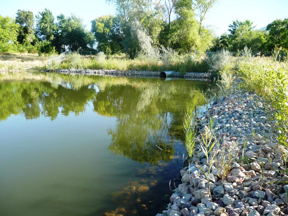
The Ogden Railroad Yard site is on the west side of Ogden, Utah, about 40 miles north of Salt Lake City. The site includes 1,120 acres bounded by the Weber River, the Ogden River and Goode Lake. For over 150 years, a rail yard has been active at the site. Spills and improper handling of hazardous substances resulted in contaminated groundwater, sediment, soil and sludge. EPA began cleanup efforts in 1994. Activities included soil removal, capping and land use restrictions. The Utah Department of Environmental Quality and EPA oversee ongoing groundwater monitoring as well as maintenance of the Goode Lake coffer dam, fencing and land use restrictions. EPA worked with the community to make sure future land use considerations were part of site cleanup goals. As a result, while cleanup was underway, the Utah Transit Authority built the FrontRunner commuter rail line across the site. Fishing was not allowed at Goode Lake (21st Street Pond) when cleanup work began, as the lake was contaminated. A coffer dam mitigation system was installed at the lake as part of the cleanup. People now use the lake to test water-skiing equipment and for recreational fishing, and a paved walking and biking trail extends around it. Historic Union Station, built on site in 1924, is home to museums, an art gallery, shops and a visitor center. In 2006, the site earned the prestigious Phoenix Award for excellence in site reuse. From 2018 to 2021, continued cleanup reclaimed a former meat-packing facility and a military salvage resale yard. A railroad service and scrap metal business operates on site.
Last updated December 2023
As of December 2024, the EPA had data on 4 on-site businesses. These businesses employed 24 people and generated an estimated $2,861,081 in annual sales revenue. For additional information click here.
For more information:
Pallas Yard
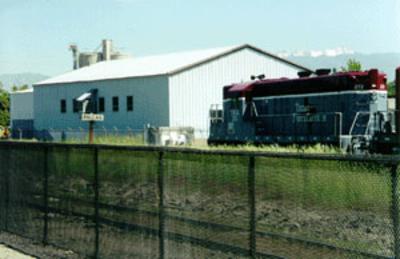
The Pallas Yard site is in Murray City, Utah. Union Pacific and the Denver & Rio Grande railroads laid the original Pallas Yard rail lines around the turn of the 20th century. Ore, slag and other smelter by-products containing heavy metals were used, stored and transferred at the site. The heavy metals contaminated soil and groundwater. Utah Transit Authority (UTA) purchased the site property in 1995 as part of the TRAX Light Rail Transportation Project in preparation for the 2002 Winter Olympics. Cleanup activities included soil removal, creation of onsite capped repositories, soils left in place under a soil cover, and placement of sound-muffling berms along the railroad tracks. Groundwater monitoring continues pursuant to a site management plan and environmental covenant. UTA continues to inspect and report on site operation and maintenance activities to EPA and the State. The site is an active railroad yard and UTA uses the site as a thoroughfare for the TRAX Light Rail System.
Last updated December 2023
As of December 2024, the EPA did not have economic data related to on-site businesses, or economic data were not applicable due to site use. For additional information click here.
For more information:
Petrochem Recycling Corp./Ekotek Plant
The 7-acre Petrochem Recycling Corp./Ekotek Plant Superfund site is in northern Salt Lake City, Utah. From 1953 to 1988, a used oil refinery and oil reclaiming/recycling facility was on site. Improper and illegal waste management practices led to contamination of groundwater and soil. EPA added the site to the National Priorities List (NPL) in 1992. Cleanup included removal of contaminated soil and liquid wastes for disposal off site and the use of natural processes to address groundwater contamination. EPA took the site off the NPL in 2003. Groundwater monitoring is ongoing. The site owner uses the southeast part of the site to store delivery trucks, garbage trucks and truck parts. The owner leases the northwest side of the site to a tire recycling company.
Last updated December 2023
As of December 2024, the EPA had data on 2 on-site businesses. The EPA did not have further economic details related to these businesses. For additional information click here.
For more information:
Portland Cement (Kiln Dust 2 & 3)
The 71-acre Portland Cement (Kiln Dust 2 & 3) Superfund site is in Salt Lake City, Utah. The Portland Cement Plant deposited about 55,000 cubic yards of cement kiln dust (CKD) as fill material at the site between 1963 and 1983. CKD and other waste materials at the site contain high concentrations of heavy metals. Disposal practices contaminated soil, air, and groundwater with heavy metals. EPA added the site to the National Priorities List (NPL) in 1986. Cleanup activities led by EPA, potentially responsible parties and the Utah Department of Environment Quality included the removal, treatment and off-site disposal of contaminated waste. Groundwater monitoring is ongoing. Redevelopment at the site includes a charter school, a boilermaker trade school, a recycling facility, roadways and a high-capacity underground sanitary sewer system. The site is also home to over a dozen commercial and industrial businesses. They range from an indoor sports complex to a landscaping business to a medical device wholesaler.
Last updated December 2023
As of December 2024, the EPA had data on 25 on-site businesses. These businesses employed 189 people and generated an estimated $31,874,444 in annual sales revenue. For additional information click here.
For more information:
- Reuse and the Benefit to Community: A Beneficial Effects Economic Case Study for the Portland Cement (Kiln Dust 2 & 3) Superfund Site (PDF)
- Superfund Site Profile Page
Richardson Flat Tailings
The 2,341-acre Richardson Flat Tailings site is near Park City, Utah. Mining activities began in the mining district upgradient from the site in the late 1800s. The site is located in and around Silver Creek, which has been contaminated by tailings and waste rock from past mining processing operations. EPA is working with the Utah Department of Environmental Quality and Natural Resource Damage Trustees to investigate site conditions and evaluate cleanup options. A potentially responsible party (PRP) cleaned up a former tailings impoundment. The PRP also consolidated and stabilized tailings and restored wetlands. Native plants and animals have returned to these areas. A pond is also on site. The site remains in recreational and agricultural use. A state park, the Historic Union Pacific Rail Trail, crosses the site. Park City operates a park-and-ride with space for 750 vehicles and a Park City bus service. In 2022, a developer purchased part of the site. Potential redevelopment options are under consideration.
Last updated December 2023
As of December 2024, the EPA did not have economic data related to on-site businesses, or economic data were not applicable due to site use. For additional information click here.
For more information:
Rose Park Sludge Pit

The 5-acre Rose Park Sludge Pit Superfund site is in Salt Lake City, Utah. The Utah Oil and Refining Company disposed of contaminated waste in a pit on site from the 1930s to 1957. Salt Lake City (the City) purchased the property in 1957 and found the waste pit in 1976. EPA added the site to the National Priorities List (NPL) in 1983. Cleanup included the construction of a perimeter wall and capping of waste material. After cleanup, EPA took the site off the NPL in 2003. EPA worked with the state, the City and the responsible party on the expansion of Rosewood Park, a popular community recreation facility next to the site. The effort included installing exercise equipment, updating sidewalks and landscaping. The park offers tennis courts, soccer and baseball fields, a skate park, picnic areas and restrooms. The City plans to add a dog park in the future.
Last updated December 2023
As of December 2024, the EPA did not have economic data related to on-site businesses, or economic data were not applicable due to site use. For additional information click here.
For more information:
Sharon Steel Corp. (Midvale Tailings)

The 470-acre Sharon Steel Corp. (Midvale Tailings) Superfund site is in Midvale, Utah. A smelting and ore-milling facility produced lead, copper, zinc and other metals on site from 1906 to 1971. Investigations found contaminated groundwater and soil. EPA added the site to the National Priorities List (NPL) in 1990. EPA and state-led cleanup activities included fence installation, riverbank stabilization, dust control, building removal, waste capping, groundwater monitoring, removal of contaminated soil and backfilling of dug-up areas with clean soil. Soil cleanup allowed for the continued residential and commercial use of several affected properties. Cleanup finished in 1999. EPA took the site off the NPL in 2004. Also in 2004, EPA issued a Ready for Reuse Determination stating that the site is ready for residential and mixed reuse. An extension of Bingham Junction Boulevard crosses the site. The Jordan River Parkway Trail runs along the site’s western edge, supporting a variety of non-motorized recreational uses. In 2010, EPA’s Superfund Redevelopment Program (SRP) and EPA Region 8 developed a document to help clarify the uses compatible with the capped part of the site. In 2017, KC Gardner, the developer of the adjacent Midvale Slag Superfund site, purchased the undeveloped part of the site for construction of a mixed-use development called Jordan Bluffs. In October 2018, the city of Midvale held a groundbreaking event for the project. The 265-acre, master-planned, mixed-use development will include up to a million square feet of office, data center, retail/hospitality and residential components around a linear park. In 2020, Zions Bank began work on a 400,000-square foot technology campus on site. Construction finished in July 2022. The Platinum LEED-certified campus replaces 11 separate buildings that the bank owned or leased in Salt Lake Valley, lowering its energy use by 15%. The campus includes 2,000 solar panels that provide 75% of the electricity used on campus.
Last updated December 2023
As of December 2024, the EPA had data on 149 on-site businesses. These businesses employed 2,463 people and generated an estimated $889,828,945 in annual sales revenue. For additional information click here.
For more information:
- Reuse Fact Sheet: Sharon Steel Corp. (Midvale Tailings) Superfund Site, Operable Unit 1 (PDF)
- Sharon Steel Ready for Reuse Determination (2004) (PDF)
- Superfund Site Profile Page
US Magnesium
The US Magnesium Superfund site is being evaluated within a 5-mile radius remedial investigation study area next to the Great Salt Lake in Tooele County, Utah. In 1972, US Magnesium began magnesium production at the site. The process produced acidic wastes containing organochlorinated compounds that contaminated soil and groundwater. In addition to threatening the health of US Magnesium workers, the contamination posed a threat to birds and other wildlife. EPA added the site to the National Priorities List (NPL) in 2011. EPA met with interested stakeholders to support the formation of a Community Advisory Group to offer resources to area communities. US Magnesium’s facility is still active on site. US Magnesium is the only remaining magnesium producer in the United States. EPA is investigating the nature and extent of contamination caused by the facility. In 2020, EPA issued a Ready for Reuse Determination for a proposed solar energy project, stating that about 640 acres of the study area 4-5 miles south of the facility are ready for industrial reuse. In 2021, US Magnesium and EPA reached a settlement. US Magnesium accepted responsibility for reducing active contamination levels, treating contamination and ensuring financial support for the facility’s final cleanup and closure. Bird species such as the Long-billed Curlew and American White Pelican, listed sensitive species in Utah, nest on site. The Snowy Plover, a threatened species on the federal Endangered Species List, is also present on site. The largest known concentrations of Snowy Plovers in North America are on the Great Salt Lake. Small areas of habitat around the Great Salt Lake, including the site, are designated as critical-value habitat.
Last updated December 2023
As of December 2024, the EPA had data on 2 on-site businesses. These businesses employed 698 people and generated an estimated $155,014,000 in annual sales revenue. For additional information click here.
For more information:
Utah Power & Light/American Barrel Co.
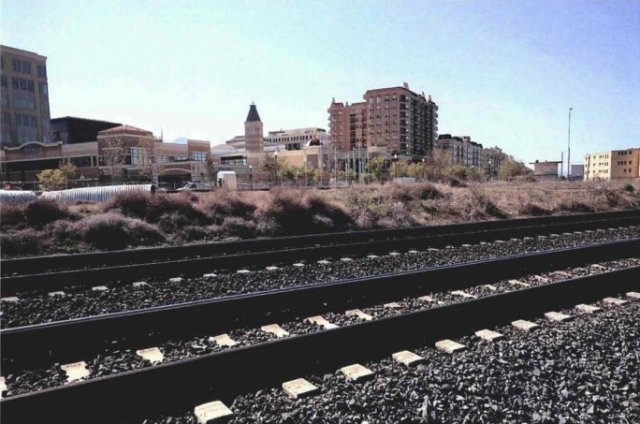
The 2-acre Utah Power & Light/American Barrel Co. Superfund site is in Salt Lake City, Utah. From 1870 to 1987, barrel storage, wood-treating and coal gasification facilities were on site. Their operations produced byproducts such as tar, sludge, ash and liquid wastes. Combined with chemicals from leaking barrels, the byproducts contaminated soil and groundwater. EPA added the site to the National Priorities List (NPL) in 1989. Utah Power & Light, the responsible party, removed 50,000 barrels, removed contaminated soil and took it off site for disposal, and built a soil vapor and groundwater extraction system. Remedy construction finished in 1996. Operation of the soil vapor and groundwater extraction system is ongoing. Several redevelopment activities have taken place at the site. In 2007, the Utah Transit Authority (UTA) extended a FrontRunner commuter rail line across the site. In 2009, UTA also built a transfer station for the commuter rail line on site. In 2014, a redevelopment company built a 5-story apartment complex on the western side of the site. It has businesses and a non-profit organization on its first floor. In 2022, the UTA opened Folsom Trail, a 1-mile-long paved multi-use path that cuts across the site. The trail connects the Jordan River Parkway Trail to downtown Salt Lake City.
Last updated December 2023
As of December 2024, the EPA had data on 3 on-site businesses. These businesses employed 8 people and generated an estimated $319,520 in annual sales revenue. For additional information click here.
For more information:
Wasatch Chemical Co. (Lot 6)
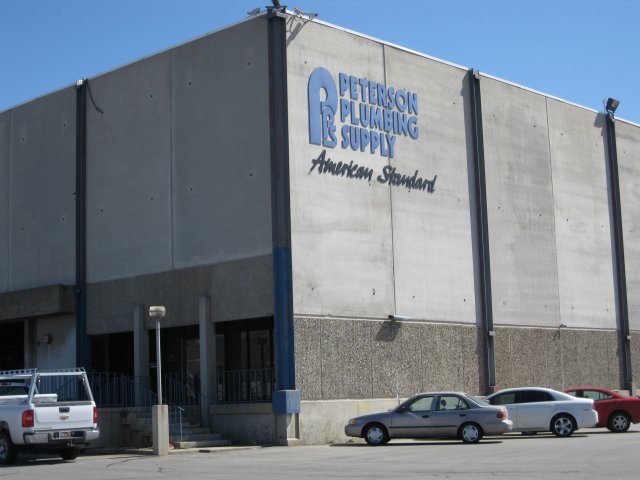
The 18-acre Wasatch Chemical Co. (Lot 6) Superfund site is in Salt Lake City, Utah. From 1957 through the early 1970's, Wasatch Chemical Company made industrial chemicals on site. These chemicals included herbicides, pesticides and fertilizers. The company's waste disposal practices and spills contaminated soil and groundwater. The site is in the center of the Jordan River Valley, above an aquifer that is a regional source of potable water. In June 1986, EPA removed drums and containers from the site. EPA added the site to the National Priorities List (NPL) in 1991. Cleanup activities included removing and treating contaminated soil and groundwater and putting land and groundwater restrictions in place. Cleanup finished in 1997. An industrial steel warehouse, plumbing supply warehouse and office buildings are on site. Monitoring is ongoing.
Last updated December 2023
As of December 2024, the EPA had data on 2 on-site businesses. These businesses employed 55 people and generated an estimated $31,063,779 in annual sales revenue. For additional information click here.
For more information:
